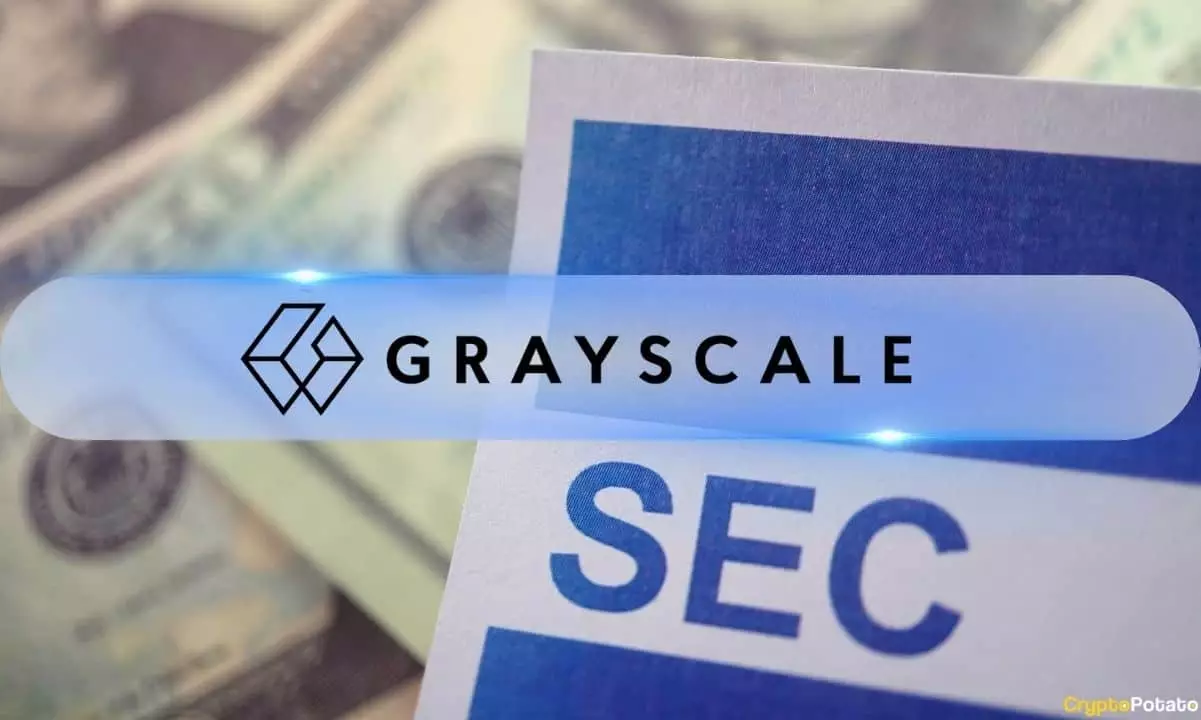In a notable maneuver within the cryptocurrency space, Grayscale Investments has formally requested the U.S. Securities and Exchange Commission (SEC) to transition its mixed-crypto fund into an exchange-traded fund (ETF). This marks a significant strategic shift, highlighting the growing acceptance and mainstreaming of cryptocurrency investment vehicles. Currently, Grayscale’s Digital Large Cap Fund (GDLC), which oversees over $524 million in assets, primarily consists of Bitcoin (BTC) at 75% and Ethereum (ETH) at 19%. The remaining assets are allocated to notable altcoins such as Solana (SOL), Avalanche (AVAX), and XRP. An approval from the SEC could pave the way for Grayscale to list this ETF on the New York Stock Exchange (NYSE), further legitimizing crypto funds in traditional financial markets.
This initiative by Grayscale comes amidst a burgeoning interest in crypto ETFs, with other players like Canary Capital and Bitwise also taking steps to create their own offerings. Canary Capital, for instance, is venturing into the release of a spot Litecoin ETF, which underscores the increased diversification within the cryptocurrency ETF market. Such developments underscore a shift toward broader acceptance and investor interest in diverse cryptocurrencies beyond the leaders like Bitcoin and Ethereum.
The competitive strain in the cryptocurrency ETF landscape is intensifying, as more companies are eager to tap into the potential retail and institutional investor base. For instance, Bitwise and Canary Capital have also filed their applications for a spot XRP ETF. They aim to track XRP’s price by utilizing the Chicago Mercantile Exchange’s CF Ripple index, which reflects a methodical approach to manage and leverage the price stability of these tokens amidst volatility.
Regulatory Nuances and Market Sentiment
As expectations mount regarding these new financial products, it’s essential to navigate the regulatory spectrum carefully. Grayscale’s previous conversions of its Bitcoin (GBTC) and Ethereum (ETHE) products into ETFs mark a successful precedent that could be replicated with XRP and Litecoin. CEO Brad Garlinghouse of Ripple has maintained a steadfast optimism about the prospect of launching an ETF for XRP, despite the ongoing legal challenges facing his company with the SEC.
Additionally, Canary Capital’s upcoming Litecoin ETF is rooted in a vision of institutional adoption, perceiving Litecoin as a stable and historic digital currency. This ETF would be tethered to the CoinDesk Litecoin Price Index to establish its daily net asset value, potentially enhancing the instrument’s reliability and attractiveness to investors.
The developments in Grayscale’s ETF ambitions signal not only an internal strategic evolution but also a larger movement within the financial market toward cryptocurrency acceptance. As confidence builds in the regulatory environment—with industry participants citing favorable shifts following past approvals—the potential for diverse cryptocurrency ETFs appears to expand. With significant market capitalizations, assets like Litecoin (nearly $5.3 billion) and XRP remain in contention as viable investment options, drawing the attention of both retail and institutional players hungry for innovation in asset management.
The dynamic landscape of cryptocurrency ETFs encapsulates a forward-thinking approach to investing in digital assets while navigating the regulatory terrain. As Grayscale, Bitwise, and Canary Capital chart their paths, they may redefine how investors engage with cryptocurrencies, mingling traditional investment frameworks with next-generation digital assets.



Leave a Reply